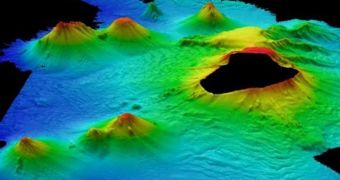While analyzing the areas around a series of hydrothermal vents, researchers discovered a large number of new communities of species that they never even knew existed. The vents surveyed for this research were located at the bottom of the sea, near Antarctica.
The environments that form around these hydrothermal vents are very special, since they are very hot and dark at the same time. This provides organisms with a rather unique combination of factors, which is enough to create extremely diverse ecosystems.
One of the most interesting things about species living near hydrothermal vents is that they cannot be found anywhere else in the world. They simply cannot survive in other environments, which we may find to be more appealing, Daily Galaxy reports.
The research team that surveyed the Southern Ocean vent says that numerous new species appear to be present in those closed-off ecosystems. However, the scientists admit it will take some time before the necessary samples can be collected, and all the new species properly identified and cataloged.
“Hydrothermal vents are home to animals found nowhere else on the planet that get their energy not from the Sun but from breaking down chemicals, such as hydrogen sulphide,” explains study team leader Alex Rogers.
“The first survey of these particular vents, in the Southern Ocean near Antarctica, has revealed a hot, dark, 'lost world' in which whole communities of previously unknown marine organisms thrive,” adds the expert, who is a professor with the Oxford University Department of Zoology.
Remotely Operated Vehicle (ROV) investigations managed to reveal at least one new species of yeti crab on the ocean floor. They appeared to occupy the dominant position in their habitats, since they were the ones clustered around the vents' chimneys.
Seven-armed sea stars and stalked barnacles were also among the species discovered near the vents. But scientists also found an unidentified pale octopus, which is one of the most complex animals discovered to live in such a hostile environment.
“What we didn't find is almost as surprising as what we did. Many animals such as tubeworms, vent mussels, vent crabs, and vent shrimps, found in hydrothermal vents in the Pacific, Atlantic, and Indian Oceans, simply weren't there,” Rogers concludes.

 14 DAY TRIAL //
14 DAY TRIAL //